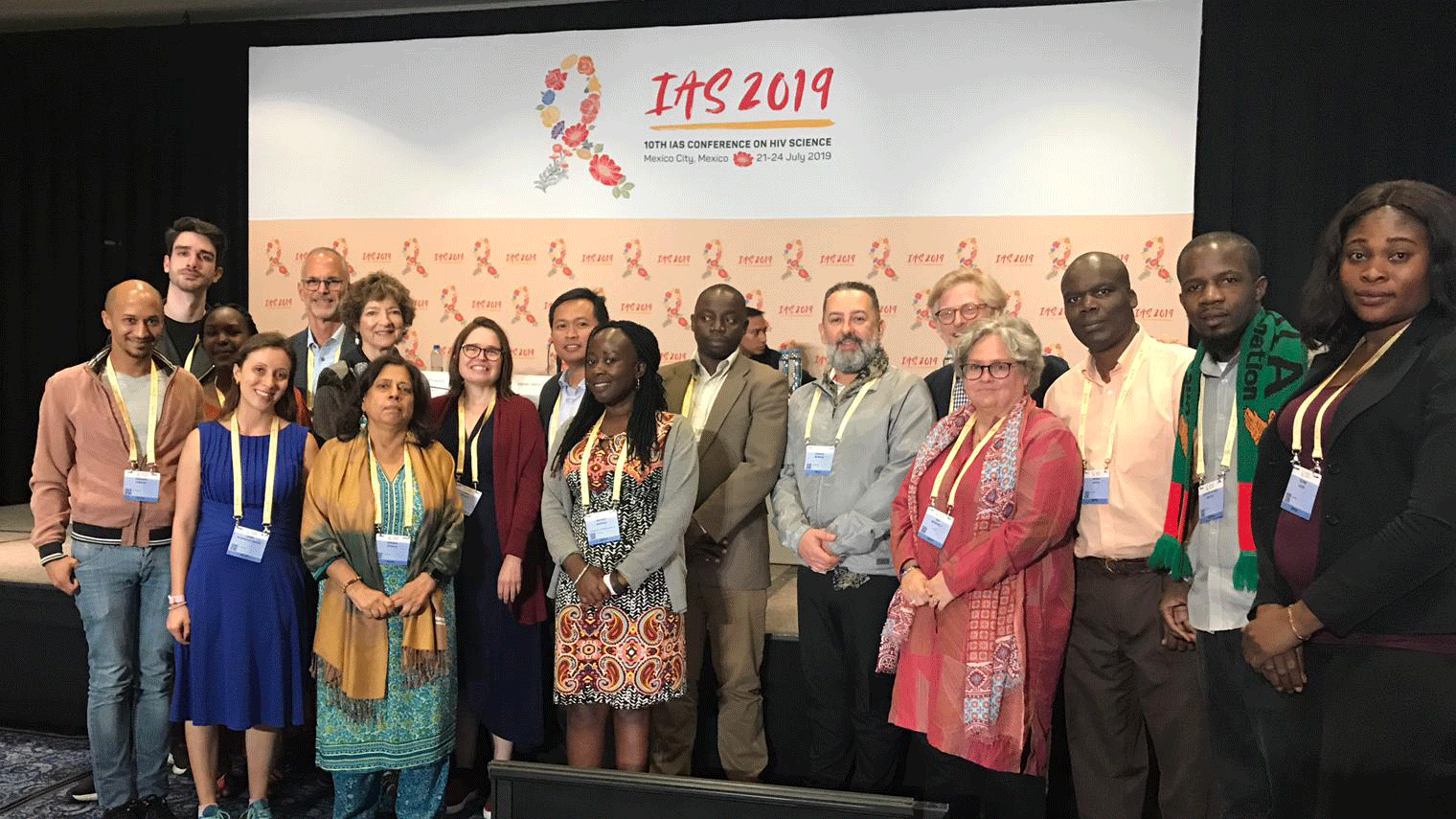
29 Jul Empowering journalists through a one-of-a-kind HIV training program
Reporting on HIV research can be a challenging task, especially when it comes to translating complex research studies and jargon for the general public. And it’s something AIGHD’s Prof. Cate Hankins is determined to do something about.
Prof. Hankins co-chairs the Media Scholar Program, which takes place at the start of the bi-annual Research for HIV Prevention (R4P) conference and the recent annual International AIDS Society Conference (IAS) which was held from July 21-24 in Mexico. The program seeks to empower journalists around the world to better understand and report on emerging issues in the field of HIV.
This year, 14 media scholars were selected from more than 150 applicants. Scholars are selected based on their interest in HIV news and science and experience in the field. They come from Brazil, Costa Rica, India, Indonesia, Kenya, Nigeria, the Russian Federation, South Africa, Uganda, United Kingdom, United States, Zambia and Zimbabwe.
The training program covered the scholars’ conference registration as well as a shortened one-day pre-conference training course focused on reporting in the field of HIV.
“A wide variety of journalists attend the program including freelance writers and those who work for an established media outlet. They come from all over the world to attend our training with a goal of better understanding the field of HIV and to strengthen their understanding and enhance their reporting in this field,” says Prof. Hankins.
Leading up to the conference, Prof. Hankins and Prof. Quarraisha Abdool-Karim of CAPRISA participated in a webinar for the journalist scholars, providing an overview of HIV, the history of the epidemic, and current hot topics. Prof. Hankins is co-chairing the face-to-face training course in Mexico City with Mitchell Warren of Global Advocacy for HIV Prevention (AVAC). The journalist scholar program is sponsored by IAS and AVAC.
Hands-on training to strengthen reporting on HIV
During the program, journalists learn which topics and potential sessions may be of interest to their audiences. For example, if there are any new drug discoveries, prevention breakthroughs, or other relevant news, the journalists learn about them before the conference starts so they deepen their understanding in advance. They then confidently approach plenary speakers and conference participants for interviews. All of this helps the journalists write more informed news stories.
“The unique aspect of this course is that everyone is brought up to speed regarding new discoveries. At the same time, my training gives the participants insights into the HIV jargon, which can be quite complex to navigate and translate for general audiences,” she explains.
“In the HIV science world, researchers frequently refer to things like undetectable viral load and the UNAIDS 90-90-90 targets, for example. It can be difficult for someone to follow, so this training plays a key role in helping them better understand what these terms mean so they can use them appropriately[1].”
Leading training across continents
Her passion to support improved media coverage in this important field extends beyond the training connected with the IAS Conference. In May, Prof. Hankins coordinated media scholar training as part of the annual INTEREST Conference in Ghana. Fourteen journalists from around the world attended that training, which was provided by AVAC and IAS.
“It’s inspiring to see the program build the self-confidence of the journalists. Many of them leave the training feeling much better prepared, and I know that they dare to approach speakers to ask questions afterwards, which is something that they might not otherwise have done. The training also improves the quality of the reports that they write and ultimately, widens our reach as their stories are read by audiences around the world.”
[1] Undetectable viral load means that a person living with HIV has such a low volume of the virus in the blood that a test cannot even detect it. The 90-90-90 targets refer to the ambitious UN goals around HIV stating that by 2020, 90% of all people living with HIV will know their HIV status. By 2020, 90% of all people with diagnosed HIV infection will receive sustained antiretroviral therapy. By 2020, 90% of all people receiving antiretroviral therapy will have viral suppression. This translates into the goal of 73% of all people living with HIV having an undetectable viral load – it provides individual clinical benefit and stops HIV transmission.
